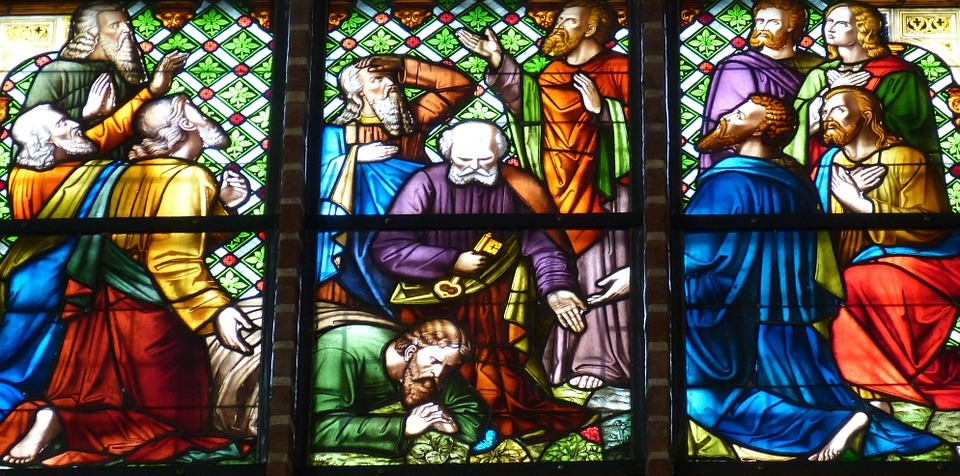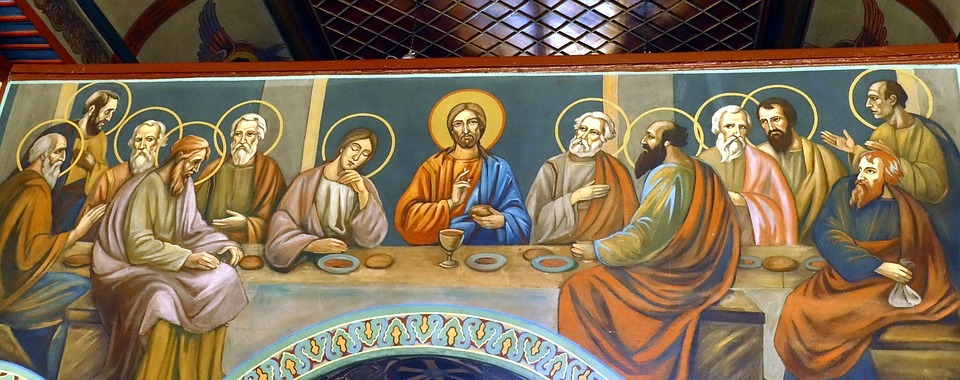The term icon comes from the Greek word eikōn which means “image.” Religious icons are works of art based on people with Biblical and historical significance. Most often the subjects of icons are the Virgin Mary, mother of Jesus, or Christ, or saints, or angels. Some include more than one in the same icon.
Some of the formats used in icons are paintings on cloth, wood, or paper, cast in metal, carved in stone or wood, or mosaics or frescoes, among others. These works of art are usually flat or nearly so.
According to Eastern Orthodox tradition, icons have been being produced since the earliest days of Christianity, and have continued throughout history until now. Others trace them back only to the 3rd century. Either way, there is a difference between the earliest icons and later ones. This may be partly due to the destruction during the Byzantine Iconoclasm in the middle 8th century, which appears to be the primary dividing point. Icons created after that are more similar to each other in subject and style.
Some believe that the first painter of icons was the Apostle Luke (also known as Luke the Evangelist), who was also the author of the Gospel of Luke and The Acts of the Apostles. It is said that he was the first to paint an image of Mary and the child Jesus. Some say that Pilate created an image of Jesus during his lifetime, though this image if it existed, was said to be lost in Constantinople during the Crusades.
It was the Fourth Century before icons are definitively described in historical writings. Aelius Lampridius, in his writing Life of Alexander Severus (xxix), wrote about Christian images used as icons. He spoke critically of them, comparing the veneration of the people for these images to that of the pagan Gentiles. However, there were still some Christian churches in the 4th century who were opposed to the use of icons; the conclusion at the Synod of Elvira (around 305AD) was that “pictures are not to be placed in churches so that they do not become objects of worship and adoration.”
However, by the mid-fifth century, it was a common practice to include images of saints and Christ in churches, shrines, and even some homes. During that time, only religious images and those of the nobility were allowed, so while all images were called icons, there were so few non-religious ones that it was unnecessary to specify the religious from the secular.
In the 8th century, the Byzantine Imperial authority challenged the use of icons. Known as the Iconoclastic Period, or the Iconoclasm, this began around 726AD when Emperor Leo III banned images. His son, Constantine V, upheld his father’s ban in 754. The Empress Regent Irene reversed the decision; however, Leo V reinstated the ban, which was finally overturned for good by Empress Regent Theodora in 843AD.
Many different denominations use icons in their worship. Some of these include the aforementioned Eastern Orthodox, along with Roman Catholic, Anglican, Oriental Orthodox, and Lutheran.
There are several purposes for icons, as they relate to the church and worship. In the church, icons enhance the beauty of the decor. In some ancient writings, decoration with icons is mentioned. Because the house of worship is meant for God and prayer, beauty that points to holiness is the proper decoration. It is notable that God commanded Moses to include images of cherubim in the tabernacle that he was to build for the Israelites to use for worship, both as images woven into the tapestry, and as actual statues on the top of the Ark of the Covenant.
While they are most often seen in churches, many Christians have icon corners or shelves in their home, as well. Private worship is just as important as community worship.
Icons are used to remind adherents of faith, and some offer instruction in Christian matters. The church fathers emphasized this, because in the early days, there were many who were not able to read. The icons taught – through images – the incarnation of Christ, His miracles, His crucifixion and resurrection, how He related to and associated with people, and more. The old adage “a picture is worth a thousand words” is apropos here, because icons can show concisely something that would take much time to relate verbally or with text. As such, they are also reminders of important facets of the faith, pointing believers back to holiness and Christ.
As well as reminding of faith, icons also teach history. In the earliest church, there was no New Testament yet; it was still being written. Even the Scriptures they had were limited, and literacy was not as widespread. Icons were used to tell the stories of what was happening before the information was put down into the texts we have today.
Icons offer a symbol of a higher standard, and a higher level of feeling and thought. The character and doings of the people depicted on icons are a reminder of the superior standard to which one should aspire. In this aspect, icons become a pattern of living. They encourage believers to follow the virtues personified therein.
They also encourage unity among the church, regardless of space and time. The early Christians are still a part of the living Body of Christ, although they are no longer among us physically. Icons are a reminder of these faithful.
Icons help with the process of sanctification and transformation, worship and veneration. Icons used in liturgy are meant to lead the soul from the finite world to the infinite spiritual realm. Many times, entrance into a church is followed immediately by lighting a candle and placing it near an icon stand, bowing with the sign of the cross and kissing the icon, followed by a brief prayer. This is known as veneration or “honorable reverence” (which is differentiated from “worship” which is given only to God). Many believe that the honor given to an icon in this way is being actually given, or transferred, to the person whom the icon represents, and because humans are made in the image of God, any honor given thusly is actually given to God. The idea is to look through the icon to the God behind it – as a window.
In worship, icons point to God and aid in focusing prayers and worship on Him, helping to shut out the distractions of the world. They give a glimpse into the future with Christ.



